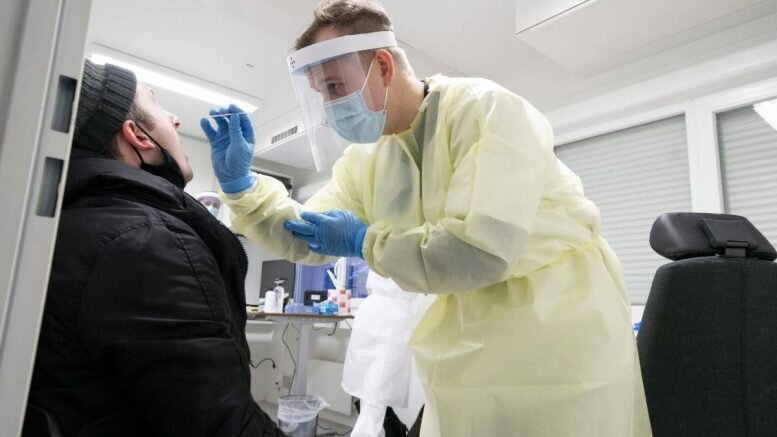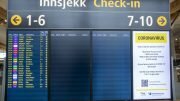At least 621 people brought the coronavirus from abroad to Norway in January, around twice as many as in the whole of December. In Oslo, the numbers are even higher.
“There has been a significant increase in the imported infection right after Christmas,” Frode Forland of the National Institute of Public Health (FHI) told news bureau NTB.
Figures from the national infection register MSIS show that 6.7% of the new infection cases after the New Year can be traced to people coming to Norway from abroad.
That is almost three times higher than in December, when 2.3% of the cases came from abroad. A total of 315 cases of imported infection cases were registered in December.
There is still a large proportion of infection cases with an unknown origin. But out of the 3,621 cases in January for which the origin of the infection is known, around 17% have been traced abroad.
Increase in Oslo
Figures from Oslo Municipality show the same development in imported infection cases.
A total of 242 people were registered who brought infection from abroad to Oslo in the first two weeks of the year, more than a quadrupling from 56 cases the two weeks before.
“These are mostly migrant workers from Lithuania, Latvia, Poland, and other Eastern European countries. Some are students from abroad or Norwegians returning from Christmas holidays abroad,” Forland said.
New test regime
From January 2, the Norwegian government introduced mandatory testing for travelers arriving in Norway from “red” countries. This will probably lead to more cases being discovered, Forland noted.
“It is very important that we catch the imported infection (cases), not least because we are concerned about the mutations that have been discovered in England and South Africa,” he added.
Initially, the rule on mandatory testing was that travelers had to test themselves during the first 24 hours in Norway.
But after many chose to avoid testing, especially at Gardermoen airport, the government tightened the measures, and from Monday onwards, testing will take place at the border station.
On Tuesday, the opposition in the Norwegian parliament (Storting) asked the government to tighten the test regime and controls further.
334 cases detected at airports
Recent figures NTB received from the Norwegian Directorate of Health show that 7,890 foreign travelers left the airports in Norway without being tested in the period after the test requirement was introduced on January 2 and up to January 17.
It is mostly at Gardermoen that people decided not to take the COVID-19 test – the airport accounts for 95% of such cases.
A total of 334 people tested positive for COVID-19 at the Norwegian airports between January 2 and January 17.
“A fairly strict regime”
Forland hopes that the current system will work well enough to detect infection cases and prevent infection from spreading further in society.
“It is a fairly strict regime. Even though we get many positive samples, these arrivals are quarantined. So far, the imported infection has not led to major outbreaks as far as we know.”
And even though the proportion of imported infection cases is increasing, it is still lower than in July and August when 27% and 19% of infections in Norway, respectively, originated from abroad.
There are also many indications that the testing system has, so far, managed to prevent the new virus mutations from spreading further in Norway.
A total of 33 cases of the English virus mutation and one case of the South African virus have been registered, according to the FHI.
“All the cases we have registered can be linked to travelers from the UK… These are individual cases and not outbreaks that have spread further, so far,” Forland concluded.
Source: © NTB Scanpix / #Norway Today / #NorwayTodayNews
Do you have a news tip for Norway Today? We want to hear it. Get in touch at [email protected]




Be the first to comment on "Norway registered 621 cases of imported infection so far in January – almost twice as many as in December"